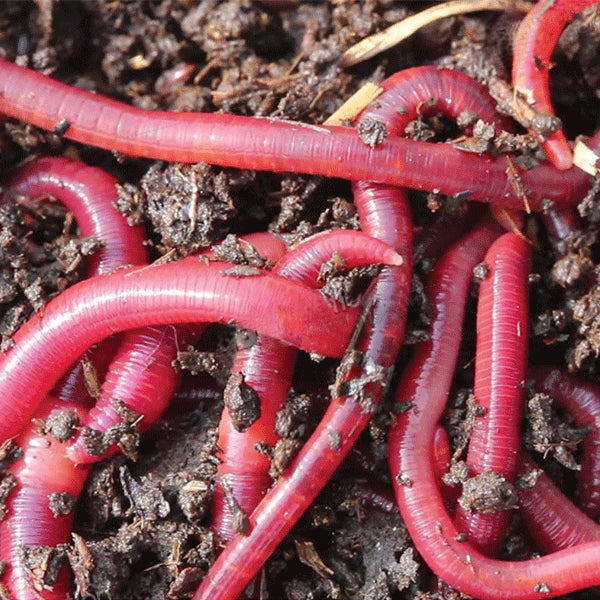Red wigglers: Top reasons to choose them
The Duty of Red Wigglers in Lasting Gardening
The assimilation of red wigglers into lasting gardening techniques provides an engaging approach to improving dirt health and minimizing natural waste. The ramifications of making use of red wigglers extend beyond plain composting; their role in shaping an extra sustainable future warrants a deeper exploration of their advantages and practical applications.
Comprehending Red Wigglers
Red wigglers, medically referred to as Eisenia fetida, are a types of earthworm renowned for their duty in lasting gardening and composting practices - red wigglers. These worms prosper in decomposing organic matter, making them specifically reliable in converting kitchen scraps and lawn waste right into nutrient-rich garden compost. Unlike standard earthworms, red wigglers have a greater resistance for differing moisture levels and can thrive in atmospheres with bountiful natural product
(Lenoir Worm Farms)Typically, red wigglers are smaller than their earthworm equivalents, generally determining between 3 to 4 inches in size. They possess a reddish-brown pigmentation and have a segmented body framework that helps in their burrowing and feeding activities. These microorganisms are hermaphroditic, meaning each specific has both male and female reproductive organs, which enables for reliable population growth under optimum conditions.
The habitat choices of red wigglers consist of wet, dark environments abundant in organic web content, such as compost containers or worm farms. Their eco-friendly function expands beyond composting; they are indispensable in aerating the dirt and helping with nutrient cycling, which inevitably adds to much healthier garden ecological communities. red wigglers. Understanding the biology and actions of red wigglers is important for those looking for to implement efficient vermicomposting in lasting gardening
Advantages of Vermicomposting
Vermicomposting deals numerous advantages that boost sustainable gardening methods and add to environmental health and wellness. Among the primary benefits is the improvement of natural waste into nutrient-rich compost, which enhances dirt framework and fertility. The castings produced by red wigglers are packed with valuable microorganisms and vital nutrients, making them a superb natural fertilizer.
Furthermore, vermicomposting substantially lowers landfill waste. By diverting kitchen area scraps and lawn waste from garbage dumps, this technique not just decreases methane exhausts-- a powerful greenhouse gas-- yet also promotes a circular economic climate, where waste is repurposed as a resource.
One more advantage is the enhancement of soil aeration and drain (red wigglers). The burrowing activity of red wigglers creates channels in the soil, allowing air and water to penetrate more easily, thus fostering a healthier origin system for plants
In addition, vermicomposting can be done on a small range, making it obtainable for city garden enthusiasts and those with minimal area. This technique motivates environmental stewardship and awareness, as individuals come to be a lot more involved with their waste monitoring techniques. Ultimately, vermicomposting represents a sustainable, effective, and eco-friendly method to gardening that benefits both plants and the earth.
Exactly How to Begin Vermicomposting
Starting your very own vermicomposting system can be a gratifying venture that enhances your lasting horticulture methods. To begin, pick a proper container, such as a plastic bin or wooden box, with excellent drain and ventilation. The dimension will certainly depend on the quantity of kitchen area scraps you generate; a container of 10-14 gallons normally is sufficient for a home.
Following, prepare the bed linen material. Shredded paper, cardboard, and coconut coir are outstanding alternatives, supplying a comfortable environment for the red wigglers. Objective for a bed linens depth of about 4-6 inches, which must be moist however not soggy.
Once the bed linen is established, present your worms. Red wigglers (Eisenia fetida) are the most appropriate for composting. Start with approximately one extra pound of worms for every 2-3 extra pounds check out this site of kitchen scraps weekly.
Begin including kitchen waste, preventing meat, milk, and oily foods, as these can attract parasites and create smells. Routinely check the bin's dampness levels and temperature, guaranteeing it remains within the optimal array for worm activity. With these preliminary actions, you'll be well on your way to producing nutrient-rich garden compost for your garden.
Preserving a Healthy And Balanced Worm Bin
A prospering worm container requires constant care and focus to maintain an ideal atmosphere for the red wigglers. Trick factors to keep an eye on consist of dampness levels, temperature, and food supply. Maintaining a wetness degree akin to a wrung-out sponge is critical; way too much water can lead to anaerobic conditions, while as well little can dehydrate the worms.
Temperature level is likewise critical, as red wigglers prosper in a variety of 55 to 77 degrees Fahrenheit. Severe temperatures can emphasize the worms, possibly bring about mortality. Consequently, putting the bin in a climate-controlled area or making use of shielding products can aid regulate temperature level fluctuations.

Last but not least, oygenation is important. Routinely transforming the bed linen and using a fork or shovel can protect against compaction and advertise airflow, making certain a healthy and balanced, flourishing environment for the red wigglers. By sticking to these practices, garden enthusiasts can maintain an effective worm bin that sustains sustainable horticulture efforts.
Influence on Soil Health
Enhancing dirt health with the usage of red wigglers is a fundamental element of lasting horticulture. By consuming organic issue, red wigglers damage down complex materials into less complex substances, a process understood as vermicomposting.

(redworms for composting)Research studies have actually shown that soils improved with worm spreadings exhibit boosted microbial task and improved fertility, causing greater crop yields. By integrating red wigglers right into horticulture practices, garden enthusiasts not only enrich their soil however additionally add to a much more sustainable farming system, stressing the interconnectedness of dirt health and environmental stewardship.

Verdict
In conclusion, red wigglers considerably add to lasting gardening via their efficient vermicomposting practices. By advertising waste reduction and fostering a round economic climate, red wigglers arise as necessary elements in environmentally friendly gardening efforts, underscoring their essential function in ecological sustainability.